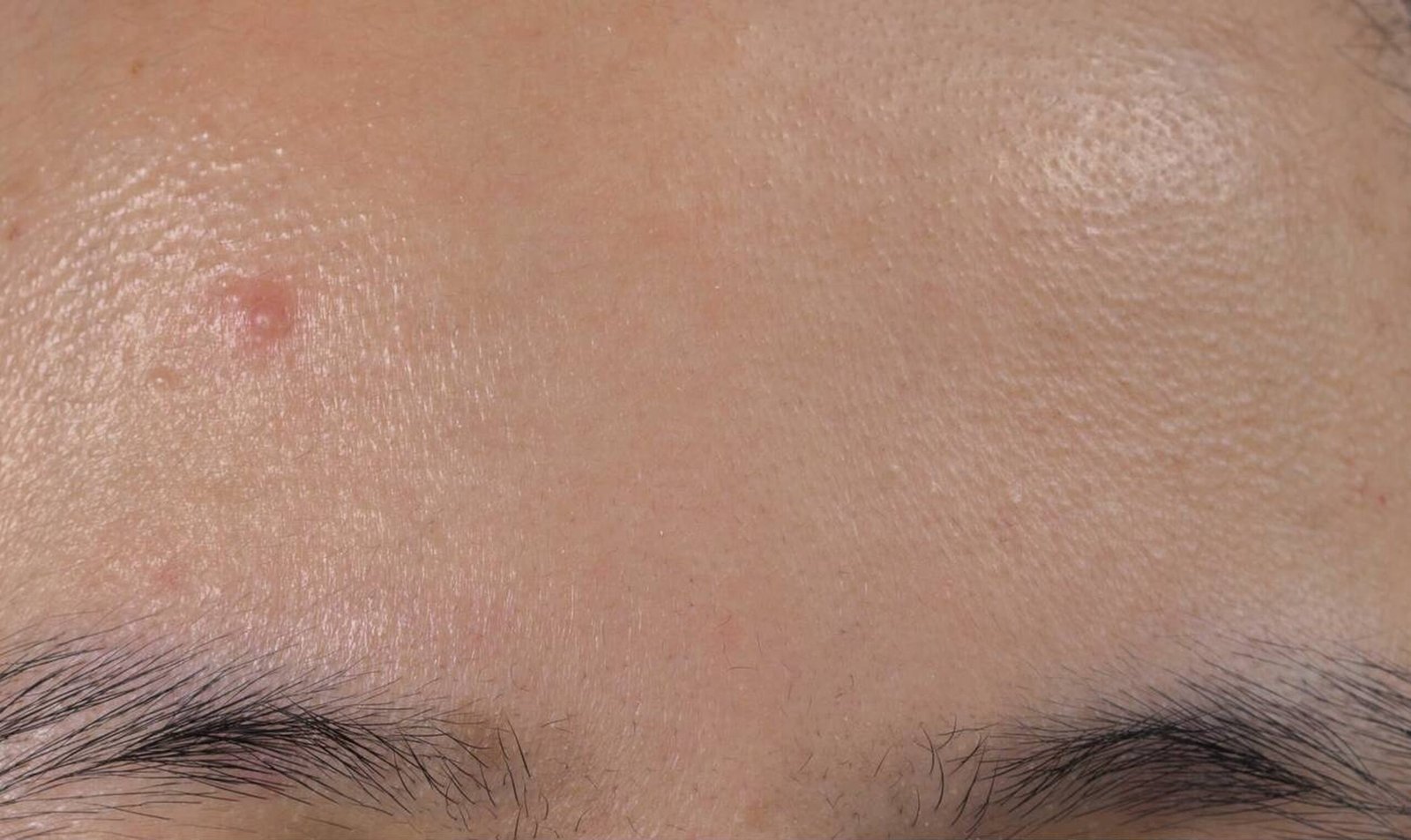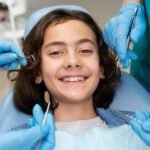Discovering a bump on eyebrow can be unsettling and even uncomfortable. These small, often irritating protrusions can appear for various reasons, ranging from simple ingrown hairs to more complex skin conditions. Understanding the causes and available treatments for eyebrow bumps is crucial for maintaining healthy skin and addressing any concerns promptly.
This article explores the common causes of eyebrow bumps, including acne, cysts, and issues related to hair removal methods like threading and tweezing. It also delves into effective home remedies, such as proper makeup removal and spot treatments, as well as medical options for persistent cases. Additionally, it provides valuable prevention tips to help reduce the likelihood of future bumps, ensuring readers have a comprehensive guide to tackle this common skin issue.
Common Causes of Eyebrow Bumps
Acne
Acne is a common cause of bumps on the eyebrow area. It develops when excess oil production traps dead skin cells and debris inside the pores. This environment encourages the growth of Propionibacterium acnes (P. acnes), a bacterium associated with acne. As P. acnes multiplies rapidly in these clogged pores, it triggers the body’s immune response, leading to inflammation and the formation of pus-filled cysts.
Ingrown Hairs
Ingrown hairs occur when a hair strand gets stuck under the skin, growing backward or sideways. This issue is particularly common in areas where hair removal methods like shaving, plucking, tweezing, or waxing are frequently used. An ingrown hair can trap dirt, dead skin cells, and bacteria inside the hair follicle, potentially causing mild skin irritation or infection. In some cases, this can develop into a cyst.
Cysts
Cysts are closed pockets of tissue that contain fluid, air, or pus. They often develop from clogged oil glands. There are several types of cysts that can appear on the eyebrow area:
- Epidermoid cysts: These are noncancerous bumps that appear beneath the skin, often on the face, neck, and torso. They are typically small, slow-growing, and painless.
- Sebaceous cysts: These form around hair follicles when sebaceous glands become blocked, trapping keratin fluid. They can be uncomfortable to touch, especially if inflamed or infected.
- Periorbital dermoid cysts: These are the most common type of eyebrow dermoid cyst, developing on the outer edge of one of the brows. They may have a yellow tint and can potentially change the shape of bones in the area over time.
Folliculitis
Folliculitis is an inflammation of hair follicles, usually caused by bacterial infection or a reaction to chemicals. It is common on the face and can make hair follicles red and swollen. Symptoms of folliculitis include redness, irritation, itching, and pimple-like bumps on the skin. Staphylococcus aureus bacteria is often the culprit, but other factors such as blockages from skin products, fungi, or hair removal methods can also cause folliculitis.
Home Remedies for Eyebrow Bumps
Warm Compresses
Warm compresses have long been a traditional home remedy for various mild ailments, including eyebrow bumps. They can help with conditions such as styes, itchiness, dryness, and infections. To use a warm compress, one simply applies it directly to the closed eye. The compress can be held in place for as long as it provides comfort and relief. Resoaking in warm water and reapplying as needed is recommended.
Warm compresses work by improving circulation, soothing inflammation, and unclogging swollen eyelids. They are particularly effective for treating styes, also known as hordeola or chalazia. These occur when a localized part of the eyelid becomes swollen due to gland blockage or infection.
Tea Tree Oil
Tea tree oil has anti-inflammatory and antimicrobial properties that may help in treating inflammatory acne lesions, such as pimples. To use tea tree oil safely, it should be diluted with a carrier oil. One can combine 1 to 2 drops of tea tree oil with 12 drops of a carrier oil. However, it’s important to note that any oil product has the potential to worsen acne, so caution should be exercised.
Before applying diluted tea tree oil to the face, a patch test on the inside of the elbow is recommended to check for any skin sensitivity or allergic reactions. Signs of such reactions include itchiness, redness, swelling, and burning.
Aloe Vera
Aloe vera gel has numerous benefits for skin health. It contains vitamins C and E, as well as beta-carotene, which give it anti-aging properties. Aloe vera also has antimicrobial and anti-inflammatory effects. It can help eradicate skin blemishes and diminish age lines.
For eyebrow bumps, aloe vera can be applied liberally to the affected area to provide relief from redness and burning. It can also help moisturize dry skin rashes while offering itch relief. Aloe vera’s cooling effect may be particularly beneficial for hot, irritated skin.
Gentle Exfoliation
Eyebrow exfoliation is a beauty treatment that removes dead skin cells and cleanses the brow area. It stimulates blood flow, which can trigger brow growth and prevent ingrown hairs. Exfoliation is also a good priming step before tinting or other brow styling treatments.
To exfoliate the eyebrows, one can create a homemade scrub using natural ingredients like oatmeal or coffee grounds. When applying the scrub, it’s important to use gentle, circular motions, as the skin around the eyebrows is delicate. Consistency is key in any beauty routine, and it’s generally recommended to exfoliate eyebrows once a week, though this may vary depending on individual skin type and lifestyle.
Medical Treatments for Persistent Bumps
When home remedies fail to address persistent eyebrow bumps, medical treatments can offer more effective solutions. These treatments range from topical applications to surgical interventions, depending on the severity and nature of the condition.
Topical Medications
Over-the-counter (OTC) acne treatments and anti-acne cleansers are readily available at local pharmacies. These products work by unclogging pores, clearing dead skin cells and dirt, reducing bacteria, controlling oil production, and regulating hormones. For mild breakouts, OTC spot treatments containing drying ingredients such as benzoyl peroxide or salicylic acid can be effective.
For more severe cases, prescription-strength topical medications may be necessary. These can include:
- Topical antibiotics to reduce bacteria on the skin
- Retinoids, a form of vitamin A, which can help with various skin conditions including sebaceous hyperplasia
- Trichloroacetic acid (TCA), which exfoliates the top layer of skin and can be effective for sebaceous hyperplasia
Oral Antibiotics
In cases of moderate to severe acne or persistent folliculitis, a dermatologist may prescribe oral antibiotics. These medications work to fight bacteria throughout the body, reducing inflammation and preventing new breakouts. Common oral antibiotics used for skin conditions include tetracyclines.
Corticosteroid Injections
For large, painful cysts or nodules, corticosteroid injections can provide rapid relief. This treatment involves injecting a diluted corticosteroid directly into the affected area. Benefits include:
- Reduced inflammation and pain
- Faster healing time
- Lowered risk of scarring
The effects of corticosteroid injections can be seen within 24 to 48 hours in some cases. However, it’s crucial to have these injections administered by an experienced dermatologist to minimize potential side effects such as skin depressions.
Surgical Removal
In severe cases or for persistent cysts, surgical removal may be necessary. This minor surgery is typically performed under local anesthesia and involves making a small incision to drain or remove the cyst. While this method ensures complete removal of the bump, it may leave a small scar.
Other advanced treatments for persistent bumps may include:
- Cryotherapy: Freezing the bumps to cause them to dry up and fall off
- Laser therapy: Using various types of lasers to treat conditions like sebaceous hyperplasia
- Photodynamic therapy: Applying a light-sensitive drug to the skin and exposing it to intense light
- Electrocautery: Using an electric current to burn off the bumps
It’s important to consult a dermatologist to determine the most appropriate treatment for persistent eyebrow bumps, as the effectiveness of each method can vary depending on the specific condition and individual factors.
Prevention Tips
Proper Hygiene
Maintaining proper hygiene is crucial for preventing eyebrow bumps. Regularly washing hands for 20 seconds with soap and water can remove pathogens and allergens from the skin surface. This practice helps reduce the risk of transferring harmful microbes to the face, which can enter the body through microscopic tears when rubbing eyes or scratching cheeks. Additionally, cleansing the face twice daily and after sweating helps keep the skin clean and free from potential irritants.
Avoid Touching
Refraining from touching one’s face is essential in preventing eyebrow bumps. Face touching can spread oil from one part of the face to another, potentially clogging pores and leading to acne outbreaks. To reduce face touching, individuals can:
- Think about the germs present on objects touched throughout the day
- Substitute the behavior by snapping fingers or performing another action when feeling the urge to touch the face
- Keep fingers busy by scribbling or typing
- Place reminders to stick to the goal of not touching the face
- Wear gloves to raise awareness of how often the face is touched
Use Non-Comedogenic Products
Choosing non-comedogenic skincare and makeup products is vital for preventing eyebrow bumps. These products are formulated to avoid clogging pores and causing acne breakouts. When selecting non-comedogenic items:
- Look for products labeled “non-comedogenic”
- Avoid products containing known pore-clogging ingredients
- Choose oil-free and lightweight formulas
- Opt for fragrance-free products to minimize skin irritation
Regular Exfoliation
Incorporating regular exfoliation into a skincare routine can help prevent eyebrow bumps. Exfoliation removes dead skin cells, unclogs pores, and stimulates blood flow, which can trigger brow growth and prevent ingrown hairs. To exfoliate effectively:
- Use a gentle scrub with fine-grain particles to avoid harming delicate eyebrow hairs
- Apply the scrub to wet skin and massage using circular motions
- Exfoliate before waxing, shaving, or tweezing eyebrows
- Limit exfoliation to once or twice a week to avoid skin irritation
By following these prevention tips, individuals can significantly reduce the likelihood of developing eyebrow bumps and maintain healthier, clearer skin in the brow area.
Conclusion
Eyebrow bumps can be a pesky issue, but armed with knowledge about their causes and treatments, you’re well-equipped to tackle them. From simple home remedies like warm compresses and aloe vera to medical interventions for stubborn cases, there’s a solution for every situation. What’s more, understanding the root causes allows you to take steps to prevent these bumps from popping up in the first place.
Remember, maintaining good hygiene, avoiding face-touching, and using the right products are key to keeping your eyebrows bump-free. If you’re dealing with persistent issues, don’t hesitate to reach out to a dermatologist. They can provide tailored advice and treatments to help you achieve smoother, healthier-looking brows. In the end, with the right approach, you can say goodbye to those annoying eyebrow bumps and hello to clearer, more comfortable skin.





